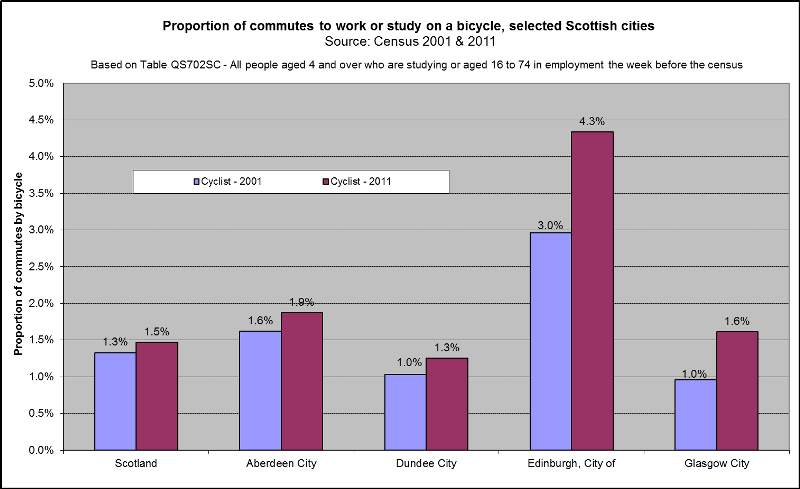Scottish cities
Cycling commuting trends, Scottish cities, 2001 - 2011 Commuting to work or study by bicycle rose in every one of Scotland's largest cities between 2001 and 2011. Despite this, levels of cycling to work are still very low compared to other modes of transport, such as driving.
Commuting to work or study by bicycle rose in every one of Scotland's largest cities between 2001 and 2011. Despite this, levels of cycling to work are still very low compared to other modes of transport, such as driving.
At a Scottish level, the proportion of cyclist commuters rose from 1.3% to 1.5% between 2001 and 2011. In Glasgow, regular cycle commuters rose from 1% to 1.6%, while in Edinburgh, which has the largest proportion of cyclist commuters in Scotland, the modal share of cyclist commuters rose from 3% to 4.3%.
Nationally, cycle commuting has remained at a low level over a long period, while commuting on foot and by bus has reduced as car commuting has risen.
Notes
The data are sourced from the 2001 and 2011 Censuses and exclude people who usually work or study at home.
The Census question is thought to underestimate levels of walking, as the question asks for the main mode of travel used on a commuting journey and multi-modal journeys which include walking, but not as the main mode of travel, are not accounted for.
A GCPH report, Pedestrian and cyclist casualty trends in Scotland, as well as providing a detailed analysis of casualty trends, outlines trends in modes of travel to work and study in Scotland (see Chapter 4 and Appendix A).
For up-to-date estimates of pupils cycling or walking to school in Scotland's four largest cities go to our travel to school pages.
